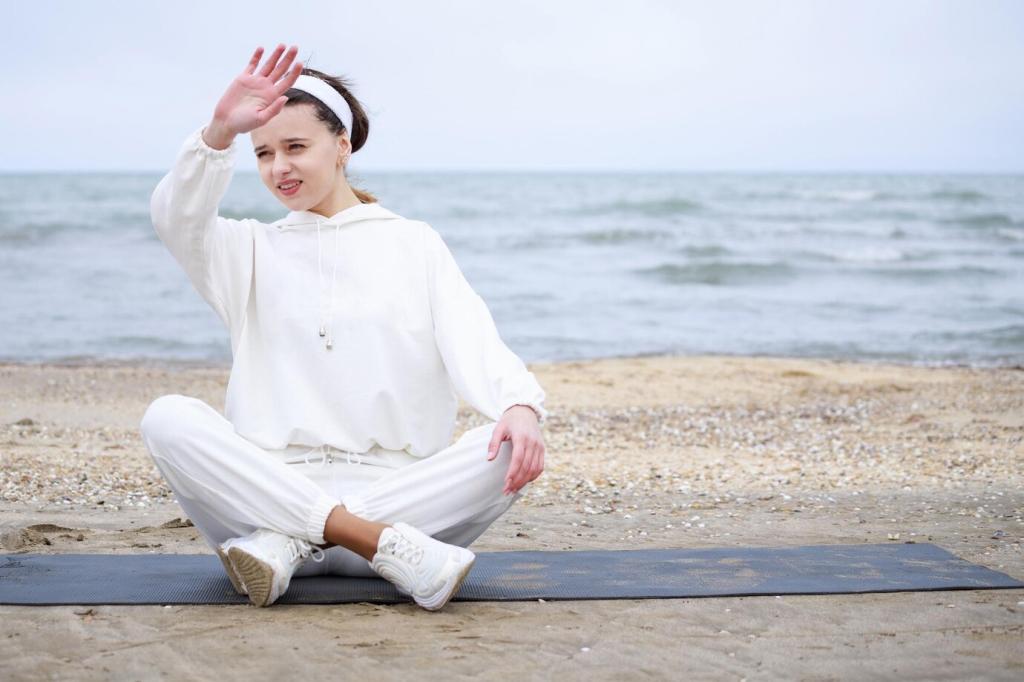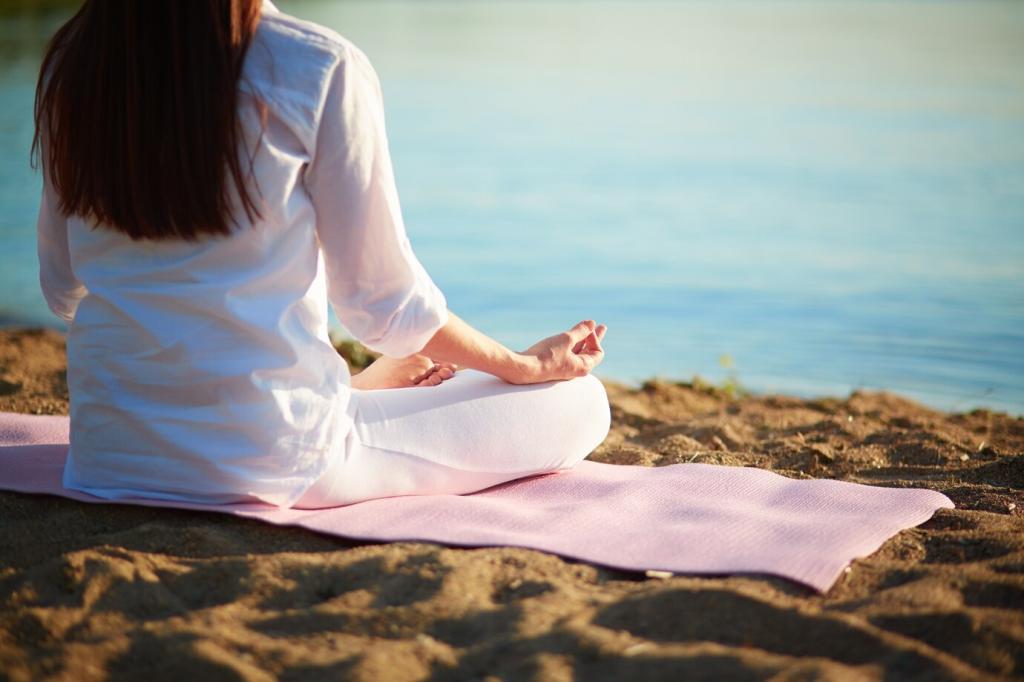The Benefits of Deep Breathing in Meditation
Today’s chosen theme is: The Benefits of Deep Breathing in Meditation. Breathe in clarity and breathe out tension as we explore how slow, steady breaths uplift focus, soothe the body, and make daily practice more compassionate and sustainable. Share your experience and subscribe for weekly breath-based prompts.

Vagus Nerve Activation
Slow breathing stimulates the vagus nerve, enhancing parasympathetic tone and reducing stress signals. Try six breaths per minute with longer exhales to feel the shift. Notice your shoulders drop and jaw unclench. Tell us how many calm breaths worked today.
Heart Rate Variability and Calm
Deep, rhythmic breathing increases heart rate variability, a marker of adaptive calm. As your heart’s rhythm becomes more flexible, attention steadies and emotions settle. Track your sensations after three minutes and comment on what changed—warmth, quiet, or groundedness.
From Fight-or-Flight to Rest-and-Digest
After a tense meeting, pause, sit, and elongate the exhale. Within a minute, your breath signals safety: thoughts slow, stomach unclenches, and posture softens. Share your post-stress breathing ritual so others can try your simple, soothing reset.
Focus, Clarity, and the Meditative Mind
Count inhales and exhales from one to five, then begin again. If you drift, gently return without judgment. This rhythmic structure stabilizes attention. Share your favorite counting pattern and how it changes your focus during longer sits.
Focus, Clarity, and the Meditative Mind
Inhale four, hold four, exhale four, hold four. This square rhythm organizes attention and reduces overwhelm. Use it before starting complex tasks or meditation. Comment when you notice your mind click from scattered to clear.
Focus, Clarity, and the Meditative Mind
Stuck in traffic, I softened my belly and lengthened the exhale. The dashboard stopped feeling like a deadline, and the car became a small sanctuary. Try three rounds tomorrow and tell us if your commute feels kinder.
Emotional Regulation Through the Breath
Name, Breathe, Befriend
Whisper the feeling’s name, rest attention on the belly, and extend the exhale. This simple triad diffuses intensity and invites compassion. Share a time this approach helped you stay present without pushing the feeling away.
Exhale Length and Anxiety Relief
Anxiety often shortens the breath. Gently double the exhale length relative to the inhale. As carbon dioxide levels stabilize, your body reads safety. Share your preferred ratio and how it affects jittery hands or racing thoughts.
Community Prompt: Share Your Calm Cue
Choose a cue—a kettle whistle, a calendar alert, or sunset—to practice five slower breaths during meditation or pauses. Ritualizing the cue builds emotional resilience. Post your cue below to inspire others’ gentle, breathable routines.
Posture, Physiology, and Efficient Breathing
01
Diaphragm First, Shoulders Last
Let the belly gently expand on inhale while the lower ribs widen. Keep shoulders relaxed and quiet. This efficient pattern reduces fatigue and promotes ease. Share your favorite sitting setup—cushion, chair, or bench—that encourages diaphragmatic breathing.
02
Breathwork Safety and Comfort
If you feel dizzy, lighten the practice, breathe through the nose, and return to a comfortable pace. Those with health concerns should adapt gently. Tell us how you adjust posture or tempo to keep meditation nurturing and safe.
03
Micro-Practices During Busy Days
Waiting in line, rest a hand on your abdomen and lengthen the exhale by two counts. These brief practices support your longer sits. Share your favorite micro-moment so others can borrow your practical, calming breath cue.
Deep Breathing Across Traditions
Three-part breathing (Dirgha) expands belly, ribs, and chest, while Ujjayi adds a soft throat constriction for steady rhythm. Both cultivate focus and calm. Share which technique best supports your meditation and why it feels naturally sustainable.
Deep Breathing Across Traditions
Qigong emphasizes breathing into the lower abdomen, the Dan Tian, to gather calm vitality. This grounding focus complements seated meditation beautifully. Try five relaxed breaths there and tell us how your attention and posture respond.


Building a Daily Breath Routine
Each time you arrive home, pause at the door for two slow minutes: inhale gently, lengthen the exhale, notice the floor. This anchors habit memory. Comment after a week on what shifted in mood or energy.

